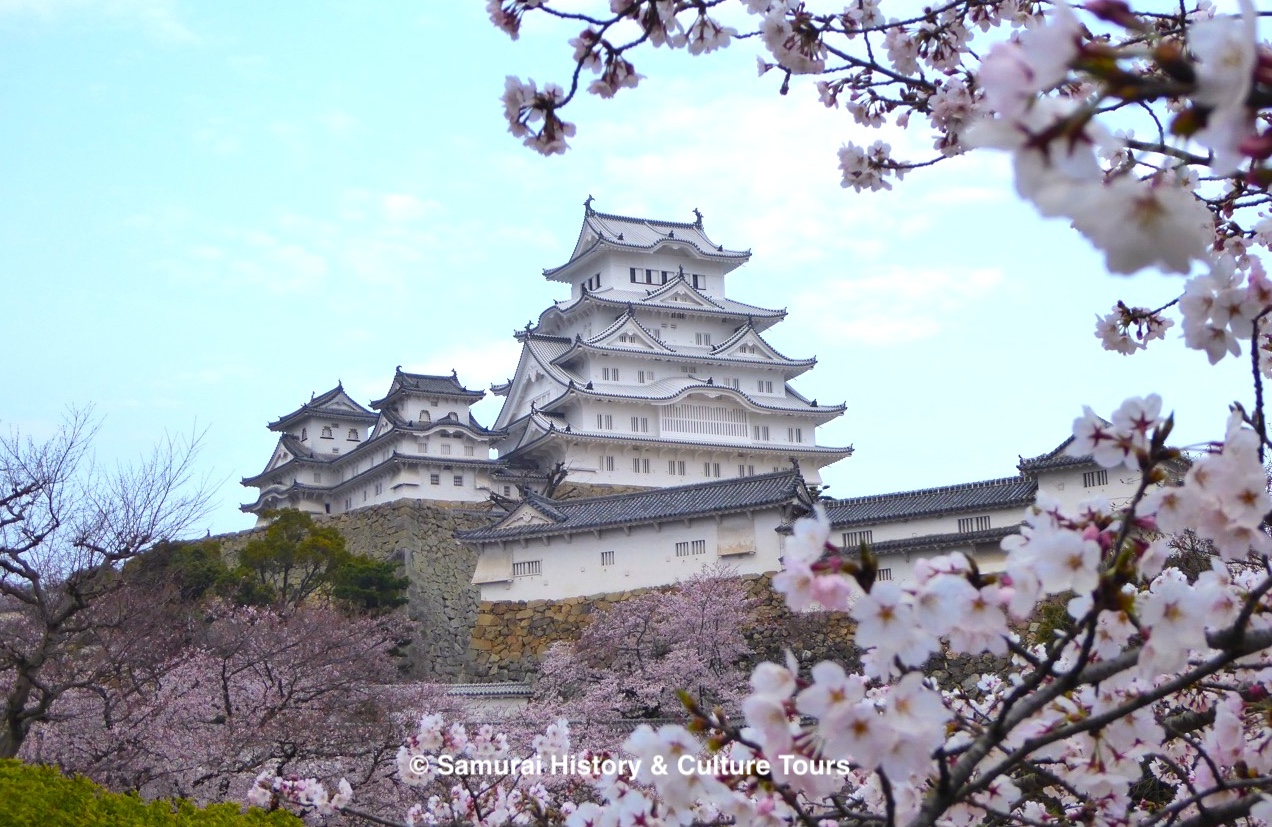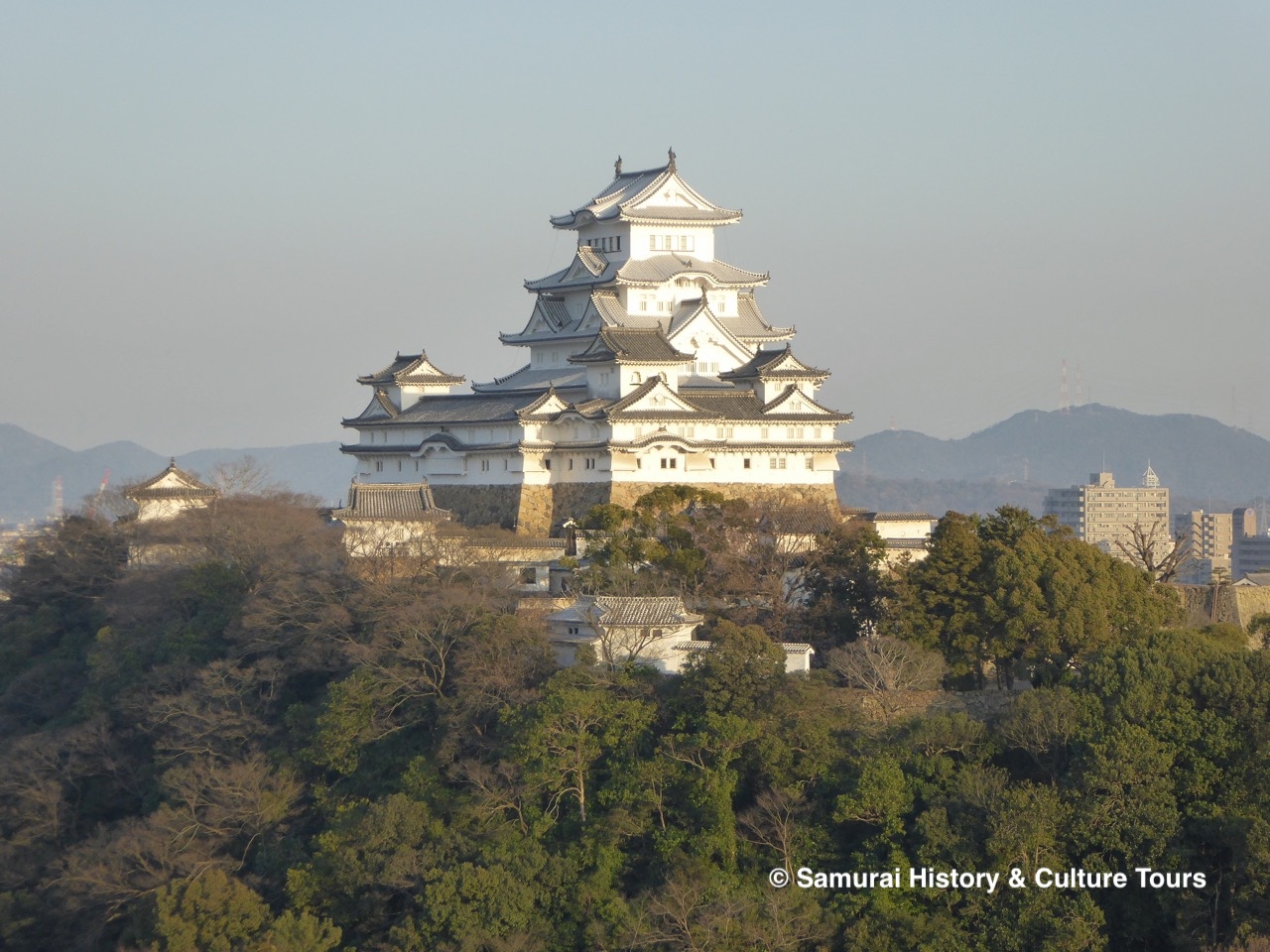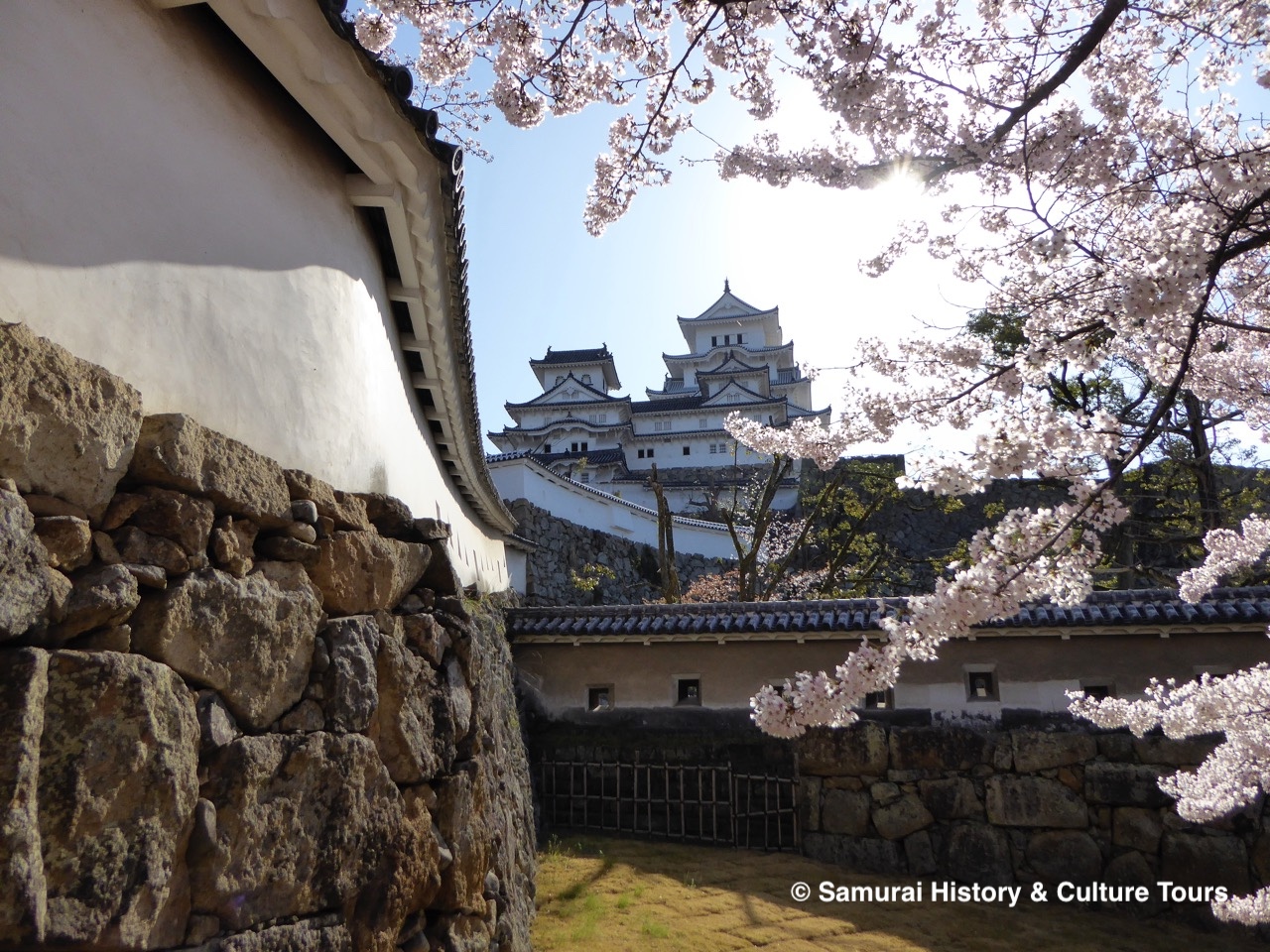Stories
Himeji Castle is a National Treasure and World Heritage Site

Himeji, the Beautiful But Deadly Samurai Castle
Himeji Castle, in Himeji City, Hyogo Prefecture, is situated on 45.6 meter high Mt. Hime, overlooking the Harima Plain. The main tower group, covered in white plaster, is said to resemble a white egret with its wings spread, hence Himeji Castle’s other name is Shirasagi-jo, or “White Egret Castle”. Himeji Castle has the most remaining Edo period (1601-1868) structures of any samurai castle. Of those, the main tenshu, keep and ko-tenshu sub keeps and were designated National Treasures in 1931, while another 74 buildings are registered as National Important Cultural Properties. Along with the Horyu-ji Temple, Himeji Castle became Japan’s first World Heritage site in 1993.

Layout
Himeji was surrounded by three defensive moat systems, a soto-bori, outer moat, naka-bori, central moat and an uchi-bori, inner moat. JR Himeji Station is a kilometer from the current castle site, and is where the soto-bori, outer moat, and main castle gates once stood. From this main gate, to the tenshu required the breaching of 19 of the castle’s 84 gates along a confusing maze-like layout. This outer moat had a circumference of 11.5 kilometers. The current remaining parts of Himeji castle are all contained within the inner moat from the uchi-kuruwa bailey on in.
A castle was first established on this site during the Nanboku-cho period (1336 to 1392). During the Sengoku period, warlord Oda Nobunaga ordered his vassal, Toyotomi Hideyoshi to strengthen the castle with a three-story tenshu. In 1600, following the Battle of Sekigahara, Ikeda Terumasa (1565-1613) was awarded the castle, and over the following eight years he built Himeji Castle as we see it now.
Ready For Battle
The Shogun, Tokugawa Ieyasu had placed his trusted son-in-law, Ikeda Terumasa in charge of strategically important Himeji, and ordered the expansion and strengthening of the castle as part of his future plans in attacking Osaka Castle where Toyotomi Hideyoshi’s son and heir, Hideyori, was preparing for the inevitable battle for supreme control of the nation. Himeji was strengthened and enlarged to obstruct the many western-based Toyotomi loyalist who would be liable to send reinforcements to Osaka, hence it was to be an imposing and impressive castle.

Work on Himeji Castle’s symbolic white tower commenced in 1601, and was completed in 1609. The main tower contains seven floors inside, with only five visible from the outside. It is the largest remaining Edo period tower keep, standing 31.5 meters high, on top of a 14.8 meter high stone base. The entire complex covers 140 meters east to west, and 125m north to south. This main keep complex is configured in a box shape around a small central courtyard, with the main tower connected via watari-yagura, corridors to three smaller outer ko-tenshu sub-keeps. This complex consists of the large tower keep, the nishi(western) ko-tenshu, inui (northwestern) ko-tenshu, and higashi (eastern) ko-tenshu. Approaching enemy can be observed from within the main keep, and attacked with matchlock guns via the downward facing “ishi-otoshi” hatches protruding over the stone walls.
As with most castles, and indeed with their weapons and armour, the samurai displayed a masterful amalgamation of military functionality with aesthetically appealing design that has remained most visible to this day in the iconic Himeji Castle.


